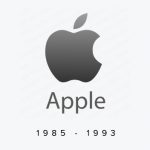By Glen Sanford
Source: apple-history.com
Sculley became the de facto head of Apple in May 1985. Over the next few months, Apple was forced to lay off a fifth of its work force, some 1,200 employees. The company also posted its first quarterly loss. All this, and the resignation of Jobs, served to erode confidence in Sculley’s abilities as CEO of Apple.
At the same time, Sculley became locked in a battle with Microsoft’s Bill Gates over the introduction of Windows 1.0, which had many similarities to the Mac GUI. Gates finally agreed to sign a statement to the effect that Microsoft would not use Mac technology in Windows 1.0–it said nothing of future versions of Windows, and Gates’ lawyers made sure it was airtight. Apple had effectively lost exclusive rights to its interface design. This would prove to be an important document in future lawsuits between Apple and Microsoft, involving the Windows interface.
What brought Mac out of the hole were the twin introductions of the LaserWriter, the first affordable PostScript laser printer for the Mac, and PageMaker, one of the first Desktop Publishing programs ever. These two in tandem made the Mac an ideal solution for inexpensive publishing, and the Mac became an overnight success, again.
In 1987, Apple introduced the…
Read the Full Story at apple-history.com
Disclaimer: Urbanfloor is not related or affiliated with Apple, Inc. and does not gain any monetary benefit by referring Apple products. Recommendations are voluntary and solely based on our own experience. iMac, iPad, iPod Touch and Apple, Inc. are registered trademarks of their respective owners.



Leave A Reply